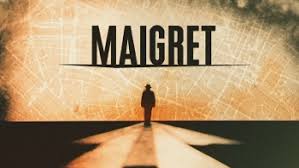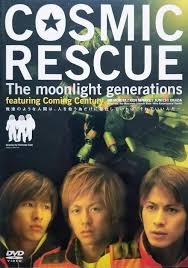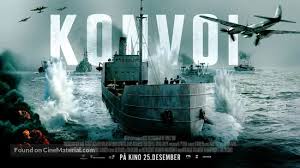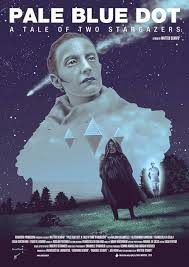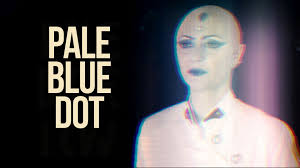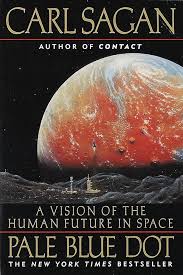Maigret (2025)
IMDb meta-data is 6 episodes of 50m rated 6.8 by 538 cinematizens.
Genre: Krimi.
DNA: French
Verdict: I liked it.
Tagline: Justice of a kind.

These comments are reactions to the first two episodes that comprise a homage to George’s Simenon, Maigret and the Lazy Burglar: Maigret et le Voleur paresseux (1961). But I have seen all six episodes and they are cut from the same cloth.
Maigret investigates not one but two serious crimes, and no they do not merge into one, as is usual in that trope, but each distracts his attention from the other. (Parallel investigations figures in all three stories, each divided into two parts. Ergo, in all, the six episodes cover three stories.)
But other usual tropes prop-up the plot: interference from outside, uncooperative colleagues, micromanagement from above, stress in his home life, and, well, this is a new one, bad dreams.
To enjoy this version, and I did, it is necessary to relinquish one’s image of Maigret and his world. This is a renovation with mod cons. There are cell phones, slave cameras, iris scans, smart houses, digital data, motion sensors, forensic science, and computers here and there with Facebook and social influencers. But so far no Ubers, no smartwatches….no A.I.
This clone has neither the bulk (as did Michael Gambon) nor the inwardness (as did Rowan Atkinson) of Maigret. (Bruno Cremer had both bulk and depth.) Yes, I know, this one doesn’t talk much but his silence does not convey depth so much as petulance. In this I agree with the prosecutor: No team player this one. I did grow irritated by satellites asking him ‘Where are you going?’ and his not answering as he walks away to prove how enigmatic he is. On the subject of annoying fillers, there were far too many ‘I’m sorry’ about anything and everything. (‘Sorry’ used to mean ‘I won’t do it again,’ now it means little more than ‘Oops.’) But he does have the currently de rigour designer fuzz to show he is a man of these times of gender fluidity.
What the episodes offer is a travelogue of Paris via Budapest, and puzzles to solve. The acting is superb, from the lazy burglar to the effete business man, the local inspector, and the leads.

However, it seemed to this viewer that there were loose plot ends flapping in the breeze. Among them are the following: How did the effete business man subdue the experienced criminal? How did he lift the body into the boot of the car? Why was there no forensic examination of the floor rug or the car boot? Was it with a flying carpet that the businessman left prison? LOL Did the helicopter pilot just sit and wait for arrest? The story muddles the relationship between police and prosecutor. Maigret covered for Cavre who didn’t seem to realise it. (He remains an annoying cardboard foil in subsequent episodes.) Though the re-enactment compensated a bit. If that spindly woman clonked the burglar, is she still in jail. I lost track.
I found comparable loose ends in all the stories.
There is no rest for a detective out of copyright, and there have been numerous British versions, Irish, Austrian, German, Italian, Russian, Dutch, and Japanese, oh, and yes, French. (I can’t find any American rendering, but no doubt it has been done.) Many liberties have been taken, about the only constant is the pipe and it appears here as a talisman. (I liked the silent joke about the pipe in a later episode.)
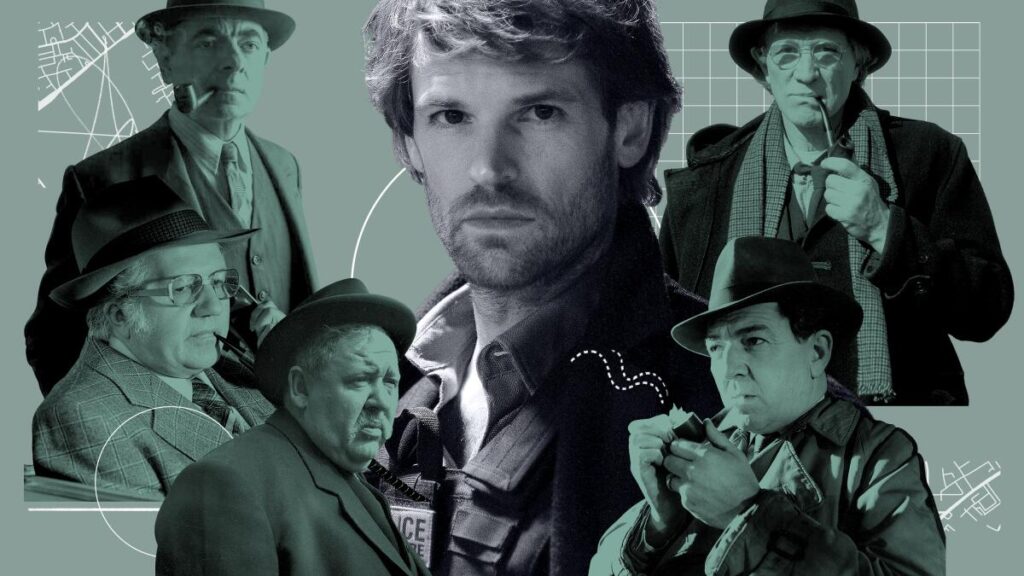
I wonder if this effort to update and refresh Maigret was inspired by the renaissance of Sherlock (2010). It is certainly a comparable effort. But it lacks the superb soundtrack that energised Sherlock.
I stuck with it for the lot. If the intention is to do the complete oeuvre then another fifty or so tales are in the pipeline.

